Bearing Witness in Care Giving
In recent years attitudes towards care giving have changed. One sees more media coverage of the subject and a growing industry for those offering fee for service. There is a great deal of “taking care of,” but not so much “providing support for” the emotional strains of care giving. In my video Aspects of Hope I talk at length about why some people should not be caregivers. I should add, not before dealing with some of their issues.
On my website is an article entitled “Why some people should not be caregivers.” The example is of someone who had no role models of people caring while growing up . The article ends with –
“This is not to say that all those who experienced abusive childhoods will behave the same way when they grow up. But it is worth noting that family behaviour does repeat itself. It is essential that we are aware of our own attitudes towards disability, disease, and giving care. It is important that we recognize our true feelings towards our parents or for whom ever it is that we may be asked to give care. Sometimes it is safer to back away from the responsibility, delegating to others. It is essential we seek professional help be it through counseling or by attending a support group. We must never buy into the belief system that all people can be care givers. It is a learned skill.
Many of us fail to accept that we must acquire the skills, believing we are failures when faced by the first problem. Few of us anticipate ahead of time that we might be caring for another and fail to prepare ourselves with knowledge. We often believe we must go it alone and asking for help is a sign of weakness. In hindsight we may believe we could have done things differently, but we must remember that at the time, we did the best we could.
Face your attitudes and beliefs with honesty and then make appropriate choices when faced with the responsibility of being a caregiver.”
For many years my mother cared for my father who had a progressive dementia. It was at a time in Britain where you “did not air your dirty clothes on the line.” This was your secret and “your cross to bear.” I was living in Canada and working with those with Alzheimer’s disease. I knew this societal attitude was not good for her. Aghast, she heard me blurt it out to her friends. How supportive they became, sharing their own hidden secrets too, but bearing witness to each other.
Recently I was excited to hear about a group of friends in a small community in California who had decided to be proactive. All were aging and all had partners who now, or in the near future, would need care. They were not going to travel on this road alone. This is what I learned from one of the group’s members.
We started out from a discussion group last spring and summer of the book “Being Mortal, Medicine and What Matters in the End” by Atul Gawande. Website We were not a book club, we came together over this book and its subject matter. That group met six times and built a lot of trust and camaraderie discussing the shortcomings of American health care for the aging. We were all most concerned about the tendency to over-operate or medicate and rely on modern medicine when sometimes it is better just to die. We were all committed to aging in our homes not in assisted living. Several spoke openly about believing in assisted suicide. That group included husbands, wives, partners, etc.
The group, which we have called “Heart Connections” is now of eight women. (The men tired of talking about this)!! Seven of the eight had done water aerobics together for years, but at that time did not have this current level of intimacy. I am the odd one who is grateful to have known these women and been invited to join them. We struggled for many months after the discussion group ended with the idea from the book about the “Village Network” concept.
(You can Google for more information such as at Village to Village Network in the US).
We decided setting up a non-profit was too much work and did not provide the intimacy we wanted.
It is only in the past couple of months that everything has started to gel. Many of our meetings were group gropes with ideas. We range from 67-86 years old with partners ranging from 67 to 94 years old. Only one has serious medical issues, needs help dressing and has lots of pain. The rest are healthy and active. Most of us have family but not close by and we are looking for nearby support as we age. We see these needs as help with meals, rides to doctors, checking up on each other, sharing resource information, etc.
We meet every three weeks for two hours. We have developed an agenda and meeting format to keep it simple. We rotate hosting, moderating, etc. We also have a time keeper and call time out when someone rambles on too long (women do that)!! We meet in each others’ homes. Those who cannot host (house too small, husband in the middle of the living room, etc) provide “simple” snacks.
We invited two to join and learned right away that it is important to first be sure new members can meet during our established meeting time. It is a nightmare to keep changing meeting times to accommodate everyone. It is every three weeks, Monday 3-5 pm. If someone is not free to commit to that, they should not participate. 8 in the group works well, but we are weighing if we should add a couple more.
We started out with three forms for everyone to complete. What will you “give” to the group? What do you need to “take” from the group? Your emergency contacts and medical background information. That is where we are right now. Our last meeting really got into how do we develop a good system to help each other contact family and friends when there is a medical emergency.
We are all grateful we do not need a lot of help yet. We are also a bit apprehensive about how much help we can actually be to each other. I do not think anyone is going to move in and be someone else’s caretaker. But we are gaining a closeness which makes us feel less alone, particularly me. I am newly retired. Though we have lived here five years, I did not have a strong social network. These women make me feel like I could leave my husband alone for a trip to visit my sister, out of state, and someone would check in on him. It is also making him feel more comfortable as he sees this friendship network developing. And my husband is pleased to know he is not the oldest, there is another husband who is 94!
We intend to share this idea with others here in town once we are sure we have something that works. So people don’t have to keep reinventing the wheel, we have decided we need simple documents, formats and procedures to share. Like a franchise or a 12 step meeting you know what to expect when procedures are standardized. Some of us prefer this structure, some are more hesitant about it. We will see if it survives over the coming months.
So this is where we have reached in this journey, and we are pleased to share.
Draft Declaration of Dependence
Heart Connections
Core Belief
One of the marvelous things about community is that it enables us to welcome and help people in a way we couldn’t as individuals. When we pool our strength and share the work and responsibility, we can welcome many people, even those in deep distress.
Jean Vanier
Guiding Principles (Needs and Concerns)
Aging in Place is our core desire as we move forward in our life journey. In our small group setting we are seeking to:
- Develop Trust and Commitment to One Another
- Develop the Ability to Ask for Help
- Keep Confidentiality
- Build Community
New Members must be able to meet on Mondays from 3-5 p.m. and understand the level of commitment required of the group.
We aspire to develop a model to share with others who desire to start a group on aging in place.
Rules of Order (Meeting Structure)
Each meeting should start on time. (If you arrive late enter quietly AND without interruption).
Each member will have an opportunity to speak for 3 minutes during “What’s on Top”. There is no crosstalk during this part of the meeting. It is the time for general sharing and asking for needed assistance from the group. If you would like to be of assistance, gesture with a thumbs-up and meet after the meeting to discuss the specifics.
If someone wants additional support, she can ask for additional time after all have shared during ‘What’s on Top.’ Group will decide then whether to extend time.
A time-out sign is given if someone goes off topic during meeting time.
At the conclusion of our meeting the group holds hands and recite: “Aging in Place with Love and Grace”.
Agenda Format
Read the Core Belief, Guiding Principles and Rules of Order
Share “What’s on Top” (go around the room)
Share where we are on “Getting our Affairs Together” (go around the room)
Attend to Agenda Items
Identify Homework when Applicable
Identify next meetings Agenda Items
Share New Information and Reminders (go around the room)
Identify specific tasks for each member for next meeting
Conclude the meeting
Tasks
Rotate Moderator/Agenda Preparation/Reminder E-Mails
Rotate Timekeeper/Tinkerbelle
Rotate Hostess who is responsible for snacks
Update Excel File
Note taking is optional
Heart Connections Proposed Agenda Date: April 11, 2016
Read the Core Belief, Guiding Principles and Rules of Order
Share “What’s on Top”
Agenda Items:
- Approve Revised Declaration of Dependence
- Do we want to use the group process for “Getting Our Affairs in Order”?
- Review Emergency Contacts for changes and additional questions
- Identify who has Durable Power of Attorney for Healthcare
- Identify who can pay the bills if you are incapacitated
- Identify Key Person for Family Network
- Identify Key Person for Friends Network
- Discuss Groups Direction and Membership
Identify Homework when Applicable
Review Medical Data and Takes for changes and additional questions
Identify Agenda Items for Future Meetings:
Review Basic Data
Medical Data and Takes
Advanced Directives and Legal Documents: Attorney who prepared will/trust and date
Judy on Hospice
Share New Information and Reminders
Carol’s place can be our default meeting location, with as much notice as possible
Group data will be kept paper based and redistributed when updates make it necessary
Kathy offered to accompany people to critical medical appointments to assist with clarification questions and recording.
Identify tasks for each member for next meeting
Agenda Preparers/Email Reminders/Moderators
Timekeeper/Tinkerbelle
Hostess/Snacks
Conclude the meeting by holding hands and reciting “Aging in Place with Love and Grace”.







